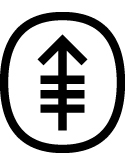Phase II trial of high-dose carboplatin and etoposide with autologous bone marrow transplantation in first-line therapy for patients with poor-risk germ cell tumors Journal Article
| Authors: | Motzer, R. J.; Mazumdar, M.; Gulati, S. C.; Bajorin, D. F.; Lyn, P.; Vlamis, V.; Bosl, G. J. |
| Article Title: | Phase II trial of high-dose carboplatin and etoposide with autologous bone marrow transplantation in first-line therapy for patients with poor-risk germ cell tumors |
| Abstract: | Background: Between 20% and 30% of patients with advanced germ cell tumors (GCTs) fail to have durable complete response to conventional cisplatin-based induction chemotherapy. However, third-line therapy with high-dose carboplatin and etoposide plus autologous bone marrow transplantation (AuBMT) has induced durable complete response in 10%-20% of patients with cisplatinresistant GCT. Purpose: We conducted a phase II trial of first-line therapy that included high-dose carboplatin and etoposide plus AuBMT in untreated men with advanced GCTs and unfavorable prognosis (i.e., "poor-risk" patients). Methods: Twenty-eight patients were treated with a conventional-dose, cisplatin-containing regimen (VAB-6 [cisplatin, vinblastine, bleomycin, cyclophosphamide, dactinomycin]) with or without high-dose carboplatin (1500 mg/m2) and etoposide (1200 mg/m2) plus AuBMT. Twenty-two of these patients were selected for treatment with two cycles of high-dose carboplatin and etoposide plus AuBMT when reduced clearance of serum tumor markers (alpha-fetoprotein [AFP] or human chorionic gonadotropin [HCG]), as evidenced by prolonged half-life (>7 days for AFP and >3 days for HCG), was observed after two cycles of conventional treatment. Results: Fifteen (56%) of 27 patients considered assessable for response achieved a complete response (12 treated with high-dose chemotherapy plus AuBMT). Sixteen (57%) are alive; 13 (46%) are free of disease at a median follow-up of 31.2 months. For 36 cycles of high-dose chemotherapy, the median duration from bone marrow infusion until a granulocyte count of 0.5/mm3 and a platelet count of 50000/mm3 was 16 days (range, 7-41 days and 8-30 days, respectively). Analysis showed a trend toward improved survival (P =.07) in patients treated with high-dose chemotherapy in this study, compared with 68 poor-risk patients with GCT treated with conventional-dose therapy alone in two earlier studies. Toxicity was not cumulative, and recovery of blood counts after AuBMT was generally rapid. Conclusions: Inclusion of high-dose carboplatincontaining chemotherapy in treatment of poor-risk GCT patients is feasible when serum tumor marker half-life is used to predict resistance to standard cisplatin-based therapy. High-dose therapy in this setting was well tolerated. Implications: Early use of a dose-intensiveregimen may increase survival compared with conventional-dose therapy alone. Further studies with standard induction therapy and intensive high-dose therapy using hematopoietic growth factor support are warranted, followed by a randomized trial comparing this strategy with standard therapy. [J Natl Cancer Inst 85: 1828-1835, 1993] © 1993 Oxford University Press. |
| Keywords: | adolescent; adult; cancer survival; clinical article; survival analysis; cisplatin; diarrhea; liver dysfunction; combined modality therapy; drug megadose; carboplatin; nephrotoxicity; phase 2 clinical trial; etoposide; blood toxicity; nausea; vomiting; antineoplastic combined chemotherapy protocols; granulocyte macrophage colony stimulating factor; cyclophosphamide; vinblastine; thrombocyte count; dactinomycin; bleomycin; lactate dehydrogenase; hyperbilirubinemia; leukocyte count; bone marrow transplantation; germ cell tumor; granulocyte; alpha fetoprotein; chorionic gonadotropin; autologous bone marrow transplantation; germinoma; prognosis; human; male; priority journal; article; support, non-u.s. gov't; support, u.s. gov't, p.h.s. |
| Journal Title: | JNCI: Journal of the National Cancer Institute |
| Volume: | 85 |
| Issue: | 22 |
| ISSN: | 0027-8874 |
| Publisher: | Oxford University Press |
| Date Published: | 1993-11-17 |
| Start Page: | 1828 |
| End Page: | 1835 |
| Language: | English |
| DOI: | 10.1093/jnci/85.22.1828 |
| PUBMED: | 7693955 |
| PROVIDER: | scopus |
| DOI/URL: | |
| Notes: | Article -- Export Date: 1 March 2019 -- Source: Scopus |
Altmetric
Citation Impact
BMJ Impact Analytics
Related MSK Work








